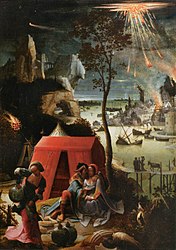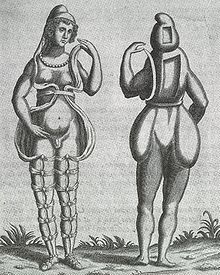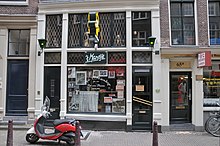
Lesbian, gay, bisexual, transgender and queer (LGBTQ) movements are social movements that advocate for LGBTQ people in society. Although there is not a primary or an overarching central organization that represents all LGBTQ people and their interests, numerous LGBTQ rights organizations are active worldwide. The first organization to promote LGBTQ rights was the Scientific-Humanitarian Committee, founded in 1897 in Berlin.
Same-sex marriage has been legal in the Netherlands since 1 April 2001. A bill for the legalisation of same-sex marriage was passed in the House of Representatives by 109 votes to 33 on 12 September 2000 and by the Senate by 49 votes to 26 on 19 December 2000. The law received royal assent by Queen Beatrix of the Netherlands on 21 December 2000 and took effect on 1 April 2001. The Netherlands was the first country in the world to legalize same-sex marriage. Polling suggests that a significant majority of Dutch people support the legal recognition of same-sex marriage.

Societal attitudes toward homosexuality vary greatly across different cultures and historical periods, as do attitudes toward sexual desire, activity and relationships in general. All cultures have their own values regarding appropriate and inappropriate sexuality; some sanction same-sex love and sexuality, while others may disapprove of such activities in part. As with heterosexual behaviour, different sets of prescriptions and proscriptions may be given to individuals according to their gender, age, social status or social class.

Rights affecting lesbian, gay, bisexual, transgender and queer (LGBTQ) people vary greatly by country or jurisdiction—encompassing everything from the legal recognition of same-sex marriage to the death penalty for homosexuality.

Boris Ottokar Dittrich is a Dutch politician, jurist, author and human rights activist who served as Leader of the Democrats 66 (D66) from 2003 to 2006. A former member of the House of Representatives (1994–2006), he has been a member of the Senate since 2019.
Same-sex marriage is legal in Aruba and Curaçao, two constituent countries of the Kingdom of the Netherlands, in accordance with a ruling from the Supreme Court of the Netherlands issued on 12 July 2024. In September 2021, a lower court in Curaçao ruled that preventing same-sex couples from marrying violates the equality provisions of the Constitution of Curaçao, but left the decision of whether to legalise same-sex marriage up to the Parliament. In December 2022, the Joint Court of Justice of Aruba, Curaçao, Sint Maarten, and of Bonaire, Sint Eustatius and Saba ruled on appeal that Aruba's and Curaçao's same-sex marriage bans were unconstitutional. The court order was set to go into effect on 7 March 2023 if not appealed to the Supreme Court; however, the governments of both Curaçao and Aruba subsequently appealed. On 12 July 2024, the Supreme Court upheld the lower court ruling, effectively legalizing same-sex marriage in Aruba and Curaçao with immediate effect.

Lesbian, gay, bisexual, transgender, and queer (LGBTQ) rights in the Netherlands are among the most advanced in the world. Same-sex sexual activity was legalized in 1811 after France invaded the country and installed the Napoleonic Code, erasing any remaining sodomy laws. No more sodomy laws were enacted after the country received independence. An age of consent equal with that of heterosexual activity was put in place in 1971. During the late 20th century, awareness surrounding homosexuality grew and society became more tolerant of gay and bisexual people. The changes eventually led to homosexuality's declassification as a mental illness in 1973 and a ban on discrimination based on sexual orientation in the military. The Equal Treatment Act 1994 bans discrimination on account of sexual orientation in employment, housing, public accommodations, and other areas. This was extended in 2019 to include discrimination based on gender identity, gender expression and sex characteristics. After the country began granting same-sex couples registered partnerships benefits in 1998, the Netherlands became the first country in the world to legalize same-sex marriage in 2001. Same-sex joint and stepchild adoption are also permitted, and lesbian couples can access IVF as well.

COC Nederland, also known as COC Netherlands, is a Dutch LGBTQ+ rights group founded in 1946. COC originally stood for Cultuur en Ontspanningscentrum, which was intended as a "cover" name for its real purpose. It is the oldest existing LGBT organization in the world.

The rights of lesbian, gay, bisexual, transgender, and queer (LGBTQ) people in Aruba, a constituent country of the Kingdom of the Netherlands, have evolved remarkably in the past decades. Both male and female forms of same-sex sexual activity are legal in Aruba.
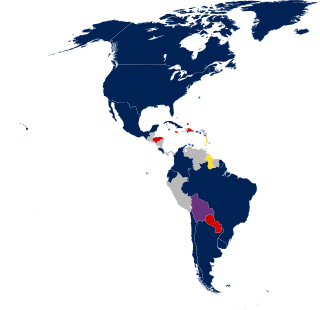
Laws governing lesbian, gay, bisexual, transgender and queer (LGBTQ) rights are complex and diverse in the Americas, and acceptance of LGBTQ persons varies widely.

This is a list of important events relating to the LGBT community from 1801 to 1900. The earliest published studies of lesbian activity were written in the early 19th century.

New York state, a state in the northeastern United States, has one of the largest and the most prominent LGBTQ populations in the world. Brian Silverman, the author of Frommer's New York City from $90 a Day, wrote that New York City has "one of the world's largest, loudest, and most powerful" LGBT communities", and "Gay and lesbian culture is as much a part of New York's basic identity as yellow cabs, high-rises, and Broadway theatre". LGBT travel guide Queer in the World states, "The fabulosity of Gay New York is unrivaled on Earth, and queer culture seeps into every corner of its five boroughs". LGBT Americans in New York City constitute by significant margins the largest self-identifying lesbian, gay, bisexual, and transgender communities in the United States, and the 1969 Stonewall riots in Greenwich Village are widely considered to be the genesis of the modern gay rights movement.

Lesbian, gay, bisexual, transgender, and queer (LGBTQ) history in Belgium has evolved through the centuries. According to LGBTQ scholars Bart Eeckhout and David Paternotte, Belgium, considered a conservative nation, developed into one of the world's most progressive and LGBTQ-friendly states. From the 16th century, Roman Catholic values influenced attitudes towards LGBTQ rights. Homosexuality and sodomy was criminalised and punished in Belgium, with gay men being put under conversion therapy by medical doctors and psychiatrists. Homosexuality was decriminalised in the 18th century, but sodomy still remained punishable until the 19th century. However, from the 21st century, Belgium developed into a more LGBTQ friendly state; Belgium's anti-discrimination law ensures that discrimination based on sexual orientation is illegal and introduces new transgender legal rights. Belgium is the second country, after the Netherlands, to open civil marriage to same-sex couples in 2003, and granted same-sex couples the right to adopt in 2006. And continues to provide asylum for individuals who may be persecuted for their sexual and gender identity. Belgium has also implemented new education policies to combat school discrimination against LGBTQ peoples and has allowed IVF and artificial insemination to be available for same-sex couples. Belgium has also supported LGBTQ politicians and expression of LGBTQ values through art.
LGBT Literature in the Dutch-language area comprises the works from writers from de Lage Landen, that is Flanders and the Netherlands, using themes or characters that form a part of, or are related to, sexual diversity. According to Gerrit Komrij qualifying for at least two of the following characteristics makes someone a LGBT author:

Lesbian, gay, bisexual, transgender, and queer (LGBTQ) people in Curaçao have similar rights to non-LGBTQ people. Both male and female forms of same-sex sexual activity are legal in Curaçao. Discrimination on the basis of "heterosexual or homosexual orientation" is outlawed by the Curaçao Criminal Code.

Lesbian, gay, bisexual, and transgender (LGBT) people in Sint Maarten may face legal challenges not experienced by non-LGBTQ residents. Both male and female same-sex sexual activity are legal in Sint Maarten, a constituent country of the Kingdom of the Netherlands, but same-sex marriage is not legal. Same-sex couples with Dutch nationality must travel to the Netherlands to get married, and that will not provide the rights of marriage in Sint Maarten.

The following is a timeline of lesbian, gay, bisexual, and transgender (LGBT) history in the 20th century.
Same-sex marriage has been legal in Bonaire, Sint Eustatius and Saba since 10 October 2012, the effective date of legislation passed by the States General of the Netherlands enabling same-sex couples to marry. The Caribbean Netherlands was the first jurisdiction in the Caribbean to legalise same-sex marriage, and was followed a few months later by French territories, including Guadeloupe and Martinique, in May 2013.
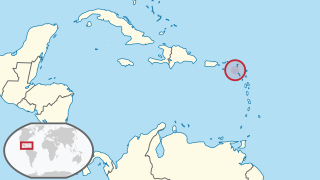
Lesbian, gay, bisexual, transgender, and queer (LGBTQ) rights in Saba are very progressive by Caribbean standards. Saba forms part of the Caribbean Netherlands and is a special municipality of the Netherlands. Both male and female same-sex sexual activity are legal in Saba, with same-sex marriage and adoption being legal since 2012. In addition, discrimination on the basis of "heterosexual and homosexual orientation" is outlawed.

LGBTQ rights differ between the various states in the Caribbean. They are influenced by previous colonization from Europe as well as each state's own interpretation of laws. For many of the states, perceptions of LGBTQ individuals are unfavorable, and laws lack protections and rights for the community.


